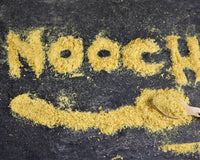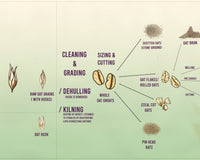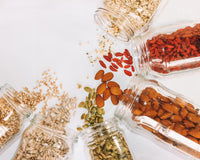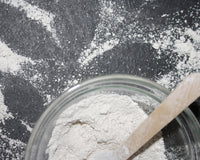We’ve had some questions and reviews from customers regarding how to cook our roasted buckwheat. Plus, what’s the difference between roasted and raw buckwheat? Well ask, and you shall surely receive! Keep on reading to find out how to make flawless Kasha.
What is Roasted Buckwheat?
Buckwheat is an ancient type of grain-like seed, also known as a pseudo cereal. It’s mainly harvested in China, Russia, and Europe. Despite its confusing name, it actually does not contain any wheat, and is therefore gluten free.
The roasted variety, also known as Kasha, has been prominent in Eastern European and Asian cuisine for centuries. However, it is now becoming more popular worldwide, in part due to its high mineral and antioxidant content. Buckwheat is also a great source of fibre and protein.
Kasha is brown in colour and has an earthier, nutty, and slightly more bitter flavour, which is stronger than raw buckwheat. It can be eaten as a snack, or used as a tasty alternative to couscous, bulgur wheat, rice, and pasta.
How to Cook
Firstly, what you need to know when it comes to cooking Kasha is it’s not the same as cooking raw buckwheat. Therefore, it does not need to be soaked or rinsed beforehand and does not need to be cooked as long either.
Here are the cooking instructions you need to make perfect Kasha, every time. This cooking method has been tried and tested by our Ukrainian staff member, where Kasha is considered a very popular cuisine and a diet staple.
Feel free to add some salt and butter or seasoning if you wish to bring out the flavours a bit more.
- Add 2 cups of water per 1 cup of buckwheat.
- Bring to a boil over a medium heat.
- Reduce heat, cover, and let it cook for 5-10 minutes, or until the water evaporates.
- Remove from boil and allow to rest. Fluff it with a fork just before serving - Enjoy!
TOP TIP – To avoid your buckwheat going mushy, do not overcook it or add too much water.
Kasha is a versatile food that can be used in both sweet and savoury recipes. For sweet dishes try porridge, granola, and cereal. For savoury meals think risotto, curries, soups, and stir-fires. Buckwheat can be used a substitute for basically any rice dish as well as any other grains. So get creative!







1 comment
Jeremy Prior
Roasted Buckwheat cooked 10 mins and added to grated carrot + ground nuts and breadcrumbs makes a superb vegetarian coating for scotch eggs and also similar mix makes meatless rissoles or burgers. I use cooked buckwheat with tomato mixed in, as a base for a layered cauliflower macaroni cheese. It’s got a very nice flavour and it’s good nutritionally too.